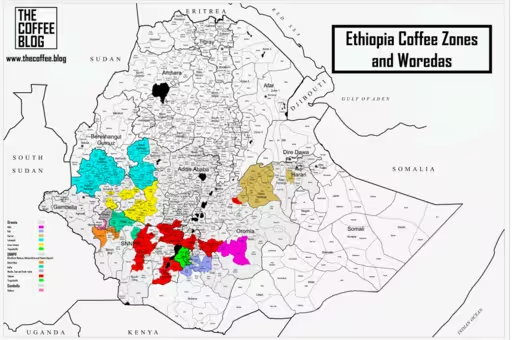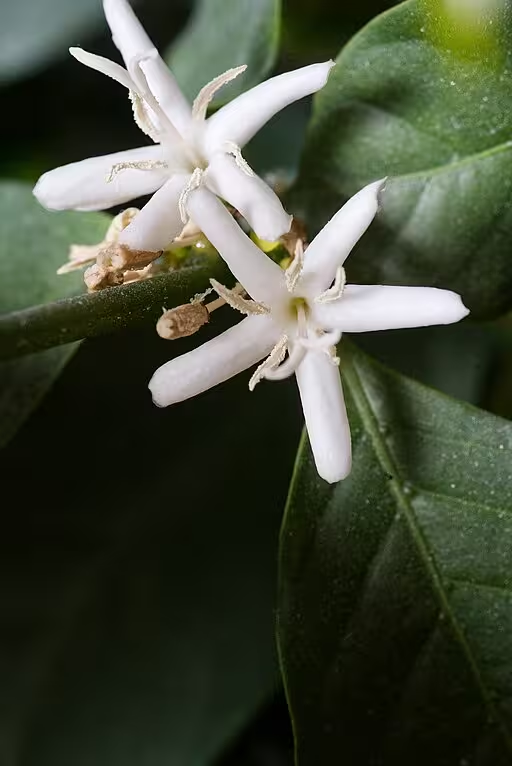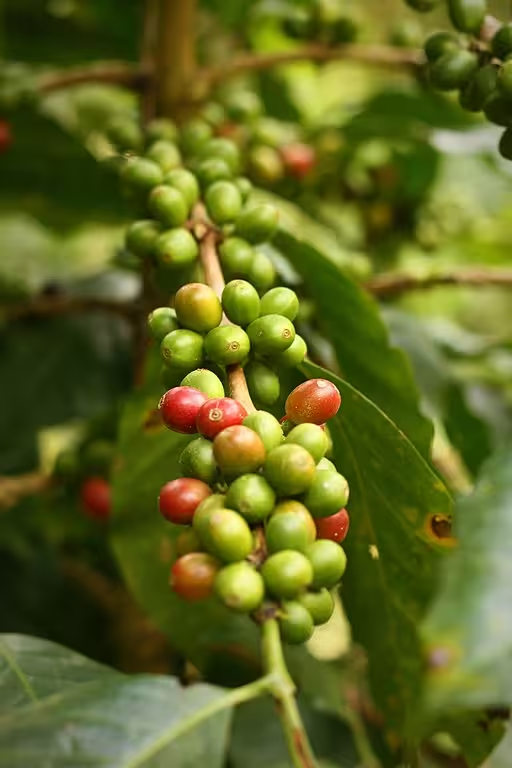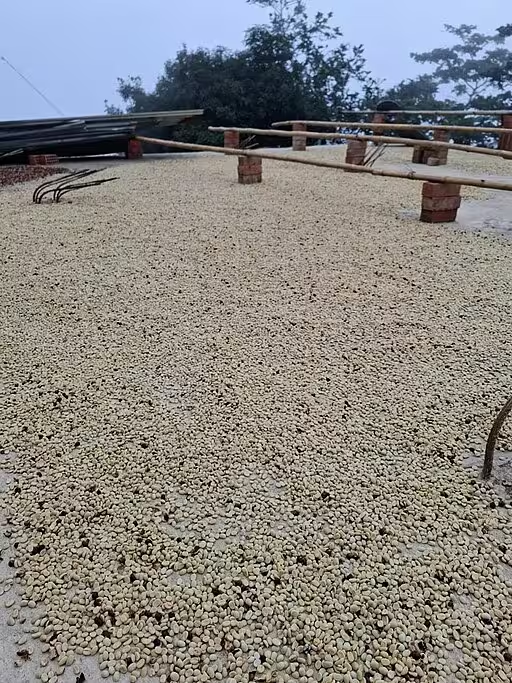In today’s world, coffee is not just a beverage; it is a ritual, a comfort, and a shared experience. But consider for a moment, have you ever thought about the history of coffee and the incredible journey of your coffee beans from an obscure origin to its current status as a global phenomenon? The history of coffee is a rich story of discovery, trade, and cultural exchange, shaping societies and economies across the globe. It is a tale as rich and complex as the brew itself.
From its origins in the misty highlands of Ethiopia to the bustling cafes of Vienna, coffee’s story is interwoven with legends, intrique, and revolution. Over the centuries, it has connected continents and cultures in a way few other commodities can. This blog post explores the fascinating history of coffee, first exploring its humble beginnings, its rise to prominence, and its enduring impact on the world we inhabit today. Read on to learn more about the aromatic trail of coffee and along the way, uncovering the secrets behind its enduring allure.
Table of Contents
The Discovery of a Shepherd: Coffee’s Origins in Ethiopia

There are a number of stories regarding the origins of coffee, but one of the most popular, centers around an Ethiopian shepherd named Kaldi. In the 9th century, Kaldi noticed that his goats were acting unusually energetic after nibbling on the berries (actually cherries) of a certain shrub, which was most likely Coffea arabica var. geisha (Medrano, et al 2025) and was growing near the Red Sea (Redden 2021). Being inquisitive, Kaldi decided to try the berries himself. Like the goats, he also felt more alert and invigorated.
A version of the story, among many, states that Kaldi shared his discovery with local monks. These monks did not believe him at first and threw the berries into a fire. The berries roasting in the fire, produced a pleasant aroma and inspired the monks to retrieve them and look for a way to make a beverage from them. Though there are many stories, the one thing in common is that Ethiopia was the birthplace coffee and it was the observations of a shepherd that lead to its discovery and use.
The legend of shepherd brings out the accidental nature of the discovery and Ethiopia’s connection to it. The Coffea arabica plant, the most cultivated species of coffee, is native to the Ethiopian highlands, underscoring its likely discovery in Ethiopia. It is possible that this species was being used in Ethiopia long before Kaldi discovered it. Coffee may have been chewed as a stimulant or brewed as a tea from the dried leaves and cherries. Through, history, though, Kaldi’s story, has become a part of coffee’s history.
Early Uses of Coffee
The first uses of coffee were not as the brewed beverage we know today. After being found in Ethiopia, the cherries were likely chewed similar to chocolate for stimulation. Chewing the cherries allowed people to experience the energy directly. In addition to eating the cherries, people also brewed the leaves into a tea and the Oromo tribe boiled the cherries (Redden 2021). Later on, the process of roasting the beans and brewing the beverage we know today began to develop.
Introduction of Coffee to the World
The early cultivation of coffee was heavily influenced by the Islamic world. The Sufi Islamic mystics of the Arabian Peninsula (Redden 2021), used coffee as a way to stay awake during prayers and religious rituals. Having a religious reason for consuming coffee helped to integrate it with the culture and aided in its cultivation. From about 1540 to 1690, the coffee trade was controlled by the Banyans, a Gurjarati merchant caste (Redden 2021).
Because of its significance to the religion, coffee houses began to develop in Mecca and Cairo, which became important centers of social and intellectual life. These early coffee houses, which were called qahveh khaneh, similar to the ones today, becoming hubs for discussion, debate, and the exchange of ideas. The growing coffee house industry and the significance of coffee to the Islamic religion helped to expand the cultivation of coffee.
Coffee Spreads to the Middle East and Beyond
For a while coffee was a regional drink, mainly confined to the Islamic world. However, it soon spread to the Middle East, where it gained more prominence. The Middle Eastern areas also developed coffee houses that became centers of intellectual and cultural life, bringing about many ideas and fostering artistic expression.
Early Opposition to Coffee
While consumption of coffee quickly spread through the region, it was not without suspicion from religious authorities, because of its stimulating effects. In some places, the drink was banned because it was thought to be intoxicating, which was forbidden by Islamic law. During the early days of coffee there was a complex relationship between coffee, religion, and social norms.
Coffee Becomes a Global Beverage
Despite the resistance in some places, the popularity of coffee continued to grow and its consumption became part of the Middle Eastern culture. Over time, intricate ways of preparing coffee developed along with specialized coffee brewing methods; all of which made coffee a cherished beverage. Eventually, coffee made its way to Europe about 1575 in Venice, Italy (Redden 2021) and beyond to England about 1650 (Redden 2021) and later the French and Dutch, leading to it becoming a global beverage. From the start of the 18th century to the end of the 18th century, European consumption went from 2 million to 120 million pounds (Redden 2021).
The Arrival of Coffee to Europe

Before coffee made its way to Europe, numerous travelers coming back from the East, had talked about the stimulating beverage that was there. However, it was not until the 17th century that coffee began to have an influence in Europe. At first, similar to the religious skepticism in the Middle East, people thought it was an exotic and dangerous substance. Some thought it was an invention of the Satan and the Muslim association was thought to corrupt Christian morals.
However, over time the draw of this beverage proved to strong to resist. Travelers coming back from the Middle East brought the beans and the knowledge of how to prepare them to Europe. Coffee houses started to appear in Europe’s major cities, such as Paris, London, and Vienna. Soon, like the ones in the Middle East, they became centers of social and intellectual life. In a sense, they were like the social media platforms of the 17th and 18th centuries.
Being a stimulating beverage, coffee helped to fuel the Enlightenment with the added discussion and debate in coffee houses. Coffee houses attracted writers, artists, intellectuals, and merchants, making for a public square. The expansion of this drink in Europe, along with the added travel, solidified its place as a staple of modern life.
The Birth of the Coffee Trade
The European powers realized the value of coffee and went to great lengths to control its production and trade. In many of the tropical colonies, especially those in the Americas, coffee plantations were established. These included Brazil, Columbia, and Central America, places which to this day are still major producers of coffee.
However, the production of coffee, required labor and led to more slaves being traded across the Atlantic. The conditions endured by the slaves were horrific and their exploitation was essential for the coffee trade to be profitable. Immense wealth was built on the coffee trade, largely on the backs of slaves. These historic conditions and later those in the former colonies led to the modern Fair Trade movement in the industry.
Coffee Becomes a Global Commodity
Over time, coffee became a global commodity, driving international commerce and geopolitical relationships. New trade routes were established that not only brought coffee, but manufactured goods and up to the mid-1800s, slaves. The desirability of the drink led to coffee being grown in most of the tropical regions throughout the world. Today is it one of the most highly traded commodities in the world (Wright, et al 2017).
Cultivation and Processing of Coffee
The process that coffee goes through from a cherry on a branch to the roasted bean in your grinder is a complex, interplay of nature, human ingenuity, and tradition. Understanding this process can help you appreciate your daily cup even more.
Species of Coffee

Two primary species of coffee, out of over 100 known species (Lachnmeier 2023), dominate the market: Coffea arabica and Coffea canephora var. robusta. C. arabica, accounts for most of the production, and is prized for its aromatic complexity and nuanced flavors. This is the original species that was discovered in Ethiopia. This species is more delicate and requires specific growing conditions, such as higher elevations, and cooler temperatures.
C. canephora var. robusta, which often goes by the synonym of C. robusta (Lachnmeier 2023), is a hardier plant and is more resistant to pests and disease. It has a higher caffeine content and a bolder, more bitter taste. This species is often used in espressos and instant coffee, generally because of the bitterness.
Cultivation and Harvest

Coffee plants are grown in shaded nurseries before they are transplanted to the fields. Particular attention is paid to the soil quality, rainfall, and temperature where they are planted. The fruits, called cherries, are harvested when they reach optimal ripeness. For best results, they are picked by hand, but in some cases they are harvested mechanically, which is less precise.
Processing the Coffee

Once the cherries are harvested, the outer layers are removed in order to remove the bean inside. There are several processing methods that can be used and include:
- Washed Process: This is also known as the wet process and involves pulping the cherries to remove the skin and then fermenting the beans to remove the remaining pulp. The washed process often results in a cleaner and brighter flavor profile.
- Natural Process: This process is also known as the “dry process” and involves drying the cherries in the sun. The drying process allows the fruit’s sugars to permeate the bean, which results in a sweeter and more complex flavor.
- Honey Process: This is a hybrid method between the other two and involves varying degrees of pulp removal and drying.
Roasting the Beans
After the processing above, the beans are sorted, graded, and then roasted. The roasting process then transforms the green beans into the aromatic and flavorful coffee we know and love. During roasting, the temperature and timing is carefully controlled to develop the flavors desired. There are three different roast levels — light, medium, and dark; each of which bring out different characteristics in the beans. For instance, light roasts, tend to be more acidic and fruity. while dark roasts are bolder and more intense. The medium roast, as you may guess, falls somewhere in between.
The Cultural Impact of Coffee
Beyond the stimulating effects of the drink, coffee has become associated with social interaction. It is a catalyst for conversation and community building, is associated with sports such as cycling (Becket 2024), and serves as a focal point for gatherings.
Influence on the Arts
The influence of coffee can also be seen in art, literature, and music. Numerous writers through time have written about coffee as a creative fuel. Artists have depicted coffee houses as centers of social life and oftentimes their works are displayed in them. Musicians have composed songs about it and think about how many times you seen a musician playing in a coffee shop.
Influence on Social and Political Movements
Coffee houses throughout history have served as meeting places for revolutionaries, intellectuals, and activists. They have often been the spaces for the exchange of ideas, where dissent could be voiced, and plans could be hatched. An example is the coffee houses of New York, Philadelphia, and Boston, before the American Revolution.
Coffee in Our Everyday Life
In the modern times, coffee has become ingrained in our daily lives, whether we drink it in the morning, afternoon, or the evening. As such, it has become more than a beverage, but a cultural touchstone, and shared experience that connects people across continents and cultures.
The Rise of Specialty Coffee
In recent times there has been a rise of specialty coffees. This movement is focused on quality, sustainability, and a deeper appreciation of the nuances of coffee. It is departure from the mass marketed coffees of most of the 20th century, and revolves around the unique characteristics of the individual beans. These characteristics are derived from their origin (Pimenta, et al 2025), varietal, and the specific processing methods used. Essentially, it is about the artistry and craftsmanship in every step of the coffee’s journey. Instead of farm-to-table, you could say from farm-to-cup.
Going Beyond the Caffeine Fix
The rise of specialty coffees has led people to desire more than a caffeine fix. Consumers are more interested in the story behind their beans, such as where they come from and how they were grown. They are interested in the farmers who grow the beans, the environmental impacts of the farmers’ practices, and the ethical considerations involved in the supply chain. Specialty coffee roasters play a crucial role in this movement and carefully select beans from specific origins. They then develop roast profiles that highlight the flavors of the beans. In effect, they act as curators, who bring the best coffees from around the world to consumers.
The Emergence of Skilled Baristas
Beyond the roasters is the emergence of skilled baristas at the end of the coffee chain. These baristas do not just brew the coffee, but provide an experience. A skilled barista understands the intricacies of different brewing methods, from pour-over and French press to espresso and cold brew. In the stores, they can advise customers on which beans to choose and how to best prepare them. As such, baristas have become educators, who share their knowledge and passion for coffee fostering new generations of enthusiasts.
The Rise of Sustainable Coffee
Along with the specialty coffee movement, there has been an emphasis on sustainability and ethical sourcing. Many specialty coffee companies work directly with farmers and pay fair prices for their beans and support their sustainable practices. These companies are committed to reducing their environmental footprint and want to ensure that the coffee production benefits the communities where it is grown. This movement, generally called Fair Trade, is transforming the coffee industry and is shaping the future of our favorite beverage.
The Future of Coffee
There are a number of challenges and opportunities to the production and enjoyment of coffee in the future including climate change, volatility in prices, new brewing technologies, and sustainability.
Effects of Climate Change
Climate change is one challenge that is a significant threat to production as rising temperatures and changing weather patterns can impact yields and bean quality. Innovation in coffee cultivation, including the development of more resistant varieties that can withstand changing conditions has some promise in adaptation. Research into drought-resistant and heat-tolerant coffee plants will be crucial for ensuring the long-term viability of the industry.
Price Volatility
Another challenge is price volatility. The coffee market is subject to fluctuations in supply and demand, which can lead to unpredictable price swings. These price swings make it difficult for farmers to plan for the future and can impact the livelihoods of those who depend on coffee production. Price stabilization and fair compensation for farmers are essential for the sustainability of the coffee industry.
Future Opportunities for Coffee

New brewing technologies, such as cold brew, turkish coffee (Lachnmeier 2023), and nitro coffee, are opening up new possibilities for the enjoyment of coffee. The rise of specialty coffee continues to drive demand for high-quality beans and unique flavor profiles. There efforts may lead to more ways to consume and enjoy coffee.
Sustainability of Coffee
Consumer interest in ethical sourcing and sustainability is pushing an emphasis on transparency and traceability in the coffee supply chain. Efforts are being made to reduce the environmental impact of coffee production, such as minimizing water usage to promoting agroforestry, and reducing waste. The future of coffee will likely involve a greater integration of technology, from precision agriculture to data analytics, to optimizing coffee cultivation and improving the efficiency throughout the supply chain.
Conclusion
From its humble beginnings in the Ethiopian highlands to current status as a global commodity, the journey of coffee has been nothing short of remarkable. It is a story interwoven with legend, trade, cultural exchange, and innovation. From the accidental discovery by a shepherd to the rise of specialty coffee, the narrative reflects the changing tastes and priorities of societies across the globe.
While the future of coffee faces challenges from climate change and economic sustainability, the passion and ingenuity of those involved in the industry offer hope for a thriving future. As we savor our next cup, let us appreciate not only the rich flavors, but also the rich history that has brought this beverage to our tables. Let’s remember, the future of coffee is still being written and you can be part of it.
References
- Becket, Adam. 2024. Cycling & Coffee: A love affair. Cycling Weekly 2024 (453): 24-29.
- Lachnmeier, Drik W. 2023. Identification of Coffee Species, Varieties, Origins, and Processing and Preparation Methods — A Status Report. Proceedings 89 (1): 9.
- Medrano, Juan F., Dario Cantu, Andrea Minio, Christian Dreischer, Theodore Gibbons, Jason Chin, Shiyu Chen, Allen Van Deynze, and Amanda M. Hulse-Kemp. 2025. De Novo whole-genome assembly and annotation of Coffea arabica var. geisha, a high-quality coffee variety from the primary origin of coffee. G3: Genes | Genomes | Genetics 15 (1): 1-9.
- Pimenta, Joao Victor Coelho, Larissa Batista dos Santos, Mariana Ramos Almeida, Rodinei Augusti, and Adriana Nori de Macedo. 2025. Geographic origin characterization of Brazilian green coffee beans via untargeted metabolomics. Food Chemistry 464 (2).
- Redden, John. 2021. Coffee in the Global Economy. Perspectives on Global Development & Technology 20 (5/6): 558-567.
- Wright, Jessica, Steven Zeltmann, Ken Griffin. 2017. Coffee Shops and Cash Crops: Gritty Origins of the World’s Favorite Beverage. Competition Forum 15 (1): 102-112.